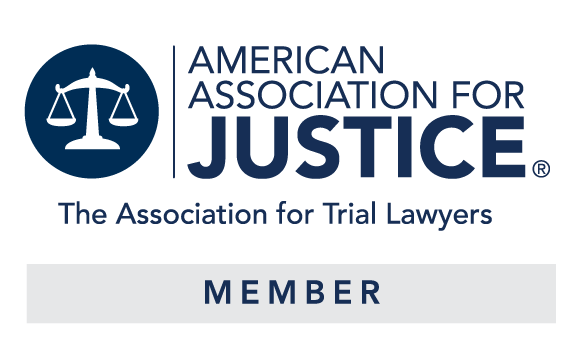Arrest
Most criminal prosecutions commence upon the arrest of the accused (or the Defendant). Most often the arresting agency is a city police department, or, in the case of a federal prosecution, one of the federal agencies such as the FBI, the DEA or the IRS. These agents usually have the discretion to detain the defendant until a court can set a bond, or these agents can release the defendant upon the defendant's own recognizance. However, just because a person has been arrested does not mean the arresting agency will actually charge the person. The decision to charge the person is usually made by the arresting agency consulting with the prosecuting attorney.
Arraignment
After the defendant has been arrested, he must be arraigned. Arraignment is the first official court action against the defendant. The legal purpose of an arraignment is to officially read the charge to the defendant, to permit the defendant to enter a plea (e.g. guilty, not guilty or no contest) to the charge, and to have the court set a bond. If the defendant is in custody, the arraignment must take rather quickly. In Ohio, the judge has the ability to set a number of types of bonds and conditions for pretrial release. The purpose of the bond is to assure the attendance of the defendant at his trial. The judge can set (i) a cash bond, (ii) a cash/surety bond, (iii) a ten percent bond or (iv) a personal bond. A cash bond requires the defendant to post the entire cash amount set by the judge. A cash/surety bond requires the defendant to either post the cash amount or utilize the services of a bondsman. If the defendant has sufficient collateral and does not appear to be a flight risk, a bondsman will post a promissory note with the court (on behalf of the defendant) for the full amount of the bond. In return, the bondsman is paid a one-time fee equaling approximately ten percent of the set bond amount - a fee which the bondsman keeps forever. A ten percent bond requires the defendant (or a family member or friend) to post just ten percent of the bond with the court, with the other 90% to be due to the court if the defendant fails to appear for trial. If the defendant appears for all court proceedings, the defendant will be entitled to the ten percent back from the court. A personal bond does not require the defendant to pay anything to a bondsman or to the court, and assumes that the defendant, basically on his honor, will appear for all portions of the court process.
Pretrial
Most, but not all, judges will set what is called a "pretrial" in the criminal prosecution process. The use of the word "trial' in the term "pretrial" is technically misleading in that there is really no official court proceeding at all. A pretrial is basically just an informal meeting between the prosecutor and the defendant's attorney to discuss the facts of the case and a possible plea arrangement. In almost all cases, the defendant must be present on this court date. If the prosecutor and the defense attorney reach a plea arrangement, the judge will go on the bench and officially take the plea and, in most cases, refer the defendant to the appropriate probation department for a presentence investigation. However, if the judge chooses to do so, he may sentence the defendant immediately after the plea.
Trial
If the defense attorney and the prosecutor are unable to reach a plea arrangement, the defendant will have to take his chances at trial. The defendant can chose whether he wants a jury trial or a bench trial. A bench trial is where there is no jury and the judge renders the verdict (as well as controls the trial process). In Ohio, a jury trial in a state prosecution consists of twelve jurors. All twelve jurors must reach the exact same decision in order for there to be a "verdict." The prosecution will present the prosecution's case first (often referred to as the prosecution's "case-in-chief"). They will do so primarily through the testimony of witnesses and the admission of exhibits. The defense attorney will be able to cross-examine each of the prosecution's witnesses and will challenge the admission of certain exhibits into evidence. After the prosecution has presented its case-in-chief, the defendant will present his case (often referred to as the "defendant's case"). The defendant will also present his case through testimony of witnesses and the admission of exhibits. As with the prosecution's case-in-chief, the prosecutor will be able to cross-examine the defendant's witnesses and will challenge the admission of certain defense exhibits. All of the witness testimony and admission of exhibits are strictly controlled by a specific set of rules (which the judge, the prosecutor and the defense attorney will know from experience and study). The length of the trial depends entirely upon the type of case involved. Some cases can take less than a day while others can take months.
Sentencing
State prosecution
In a state prosecution, in the event the defendant is convicted after a trial, or in the event the defendant enters a plea to a reduced charge, the court will have the option of either (i) sentencing the defendant right away or (ii) ordering a presentence investigation and setting the sentencing for a few weeks later. Sometimes the defendant, the prosecution and the judge, as part of a plea arrangement, have all agreed to a specific sentence, and that sentence will (usually) be imposed right after the plea. If the judge orders a presentence investigation, the presentence investigation will most likely be completely conducted by the appropriate probation department. The probation department will in almost all instances prepare a written report for the judge and (usually) the defense attorney to read. On the sentencing date, the defense attorney will highlight the good points of the report and will dispute the bad points. The judge will then render the sentence. The judge can order the defendant to serve time in prison, or the judge can place the defendant on what is commonly referred to as "probation."
Under a new set of sentencing laws which went into effect in July of 1996, the trial judge has the ability to set a wide range of a sentence, and can further order that the defendant be on "post-release control" (i.e. probation) for a period of time after the sentence is over. Further, under the new law, the length of the defendant's sentence can no longer be cut back by the prison officials if the defendant/inmate exhibits "good behavior" (under the old law this was referred to as "good time"). Instead, the defendant/inmate's sentence can actually be increased if the defendant exhibits bad behavior (under the new law this is referred to as "bad time").
Federal prosecution
Sentencing in a federal prosecution can be very complicated. This is because the United States Congress passed what are called "Sentencing Guidelines" into effect about ten years ago. These extremely complicated guidelines severely control the discretion of the judge in setting the sentence. After a defendant enters a plea, or after the defendant is found guilty, the probation department will prepare a lengthy sentencing report which will indicate what the "guideline" sentence range is. Because the "Sentencing Guidelines" are so complicated, any disputes as to the proper application of the "Sentencing Guidelines" will involve a formal hearing that can actually appear similar to a trial itself.
Other helpful links
State Prosecution:
Federal Prosecution:



